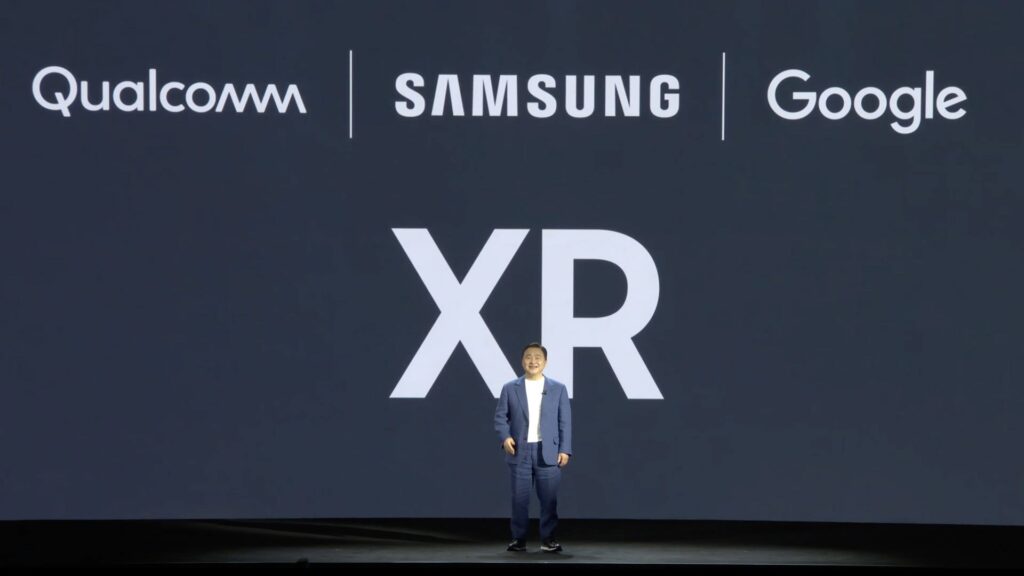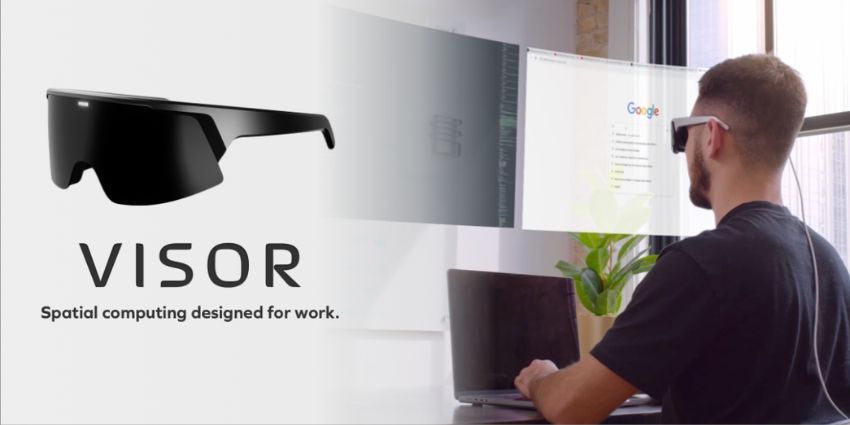from Zoe Kleinman, Technology Editor
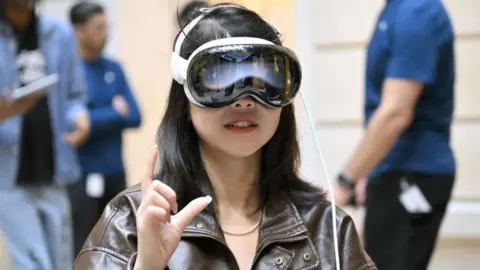 Getty Images
Getty ImagesTo understand the public’s interest in the Vision Pro, Apple’s high-tech, very expensive virtual reality (VR) headset – finally launching in the UK and Europe on Friday – where better to go than a from own stores?
In the past, people would camp outside Apple branches overnight, so desperate were they to get their hands on the tech giant’s latest product.
However, when I went to its central London branch on Friday morning, there was only a small group, mostly men, waiting for the doors to open.
In part, this is because people these days prefer the convenience of pre-orders.
But perhaps it also tells us something about the question that continues to hang over the VR headset market: will it ever escape the realm of tech geeks and go truly mainstream?
Apple’s plan to make its product break through is to position it as a product you use to do the things you already do — only better. Home videos are made like 3D, panoramic photos stretch from floor to ceiling, 360 degrees around you. Apple keeps reminding me that it calls this “spatial content”. Nobody else does. However, many grit their teeth at the Vision Pro’s price – £3,499.
Facebook owner Meta has been watching Apple’s approach closely. It’s been in the VR game for a long time. At a recent demo for Meta Quest 3, which is available in the UK from 2023, the team were very keen to talk to me about “multitasking” – having multiple screens in action at the same time . In a demo I had a web browser, YouTube and Messenger lined up in front of me. “We’ve always done this, we just haven’t talked about it,” a Meta employee told me.
AND in her latest ad, a man wears a Quest 3 to watch video instructions while building a crib. It may not be the most exciting concept, but it shows how Meta wants people to view its technology.
Oh – and her it costs less than £500.
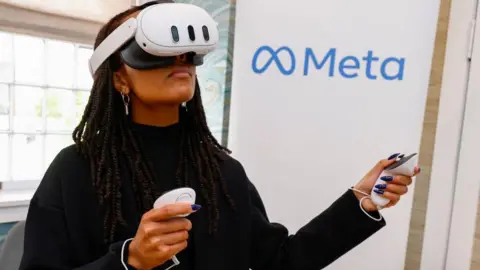 Getty Images
Getty ImagesApple and Meta are the two big players, but VR is a crowded market — there are dozens, maybe hundreds, of different headsets out there already.
But what unites them all is that none have quite reached the mainstream.
Until now, the Vision Pro has only been on sale in the US – research firm IDC predicts it will move fewer than 500,000 units this year.
The Meta, which has been around longer, doesn’t release sales figures for the Quest either, but it’s thought to have sold around 20 million worldwide.
VR headsets aren’t as widespread as tablets, let alone mobile phones.
And it gets worse – George Jijiashvili, analyst at market research firm Omdia, said that of those devices sold, many are abandoned.
“This is largely due to the limited flow of compelling content to sustain engagement,” he said.
But of course the lack of content leads to decreased interest – and a reduced incentive for developers to make that content in the first place.
“It’s a chicken and egg situation,” Mr Jijiashvili told the BBC.
Alan Boyce, founder of mixed reality studio DragonfiAR, warned that early adopters of Vision Pro will have to “be patient” until more content arrives.
This is where Quest 3 wins for him – it already has a “robust library” of games and can perform virtual desktop tasks just like Vision Pro.
And IDC analyst Francisco Jeronimo says we shouldn’t be too quick to write off a slow start for Apple’s new product.
“There’s always the expectation that Apple with every single product will sell in the millions immediately, there’s always the iPhone comparison,” he said.
But the reality is that even the iPhone took time to find its feet – and a large number of buyers.
According to Melissa Otto of S&P Global Market Intelligence, the iPhone only became mainstream when the App Store “started exploding with apps that added value to our lives.”
“When people start to feel that their lives are getting better and more convenient, then they’re willing to take the plunge,” she said.
VR experience
However, there is another factor to consider here: the physical experience of using a headset.
Both Apple and Meta use so-called “passthrough” technology to enable what’s known as mixed reality—the blending of the real and computer-generated worlds.
Using cameras on the outside of the headset, users are given a live, high-definition video of their surroundings – meaning they can wear it while doing things like walking or exercising.
But strapping something weighing half a pound to your face doesn’t feel particularly natural. Overall the headphones are now lighter than before, but I still can’t imagine wearing any of them for hours at a time – although a colleague says he often does.
A significant number of people, myself included, have experienced VR sickness, which is what happens when being in VR makes you feel anxious. This has improved significantly as technology has advanced and is much less of an issue – but any experience that has you moving with a controller instead of your feet will still take some getting used to.
Most VR experiences now include all sorts of settings to avoid this, such as the ability to “teleport” between locations. Sony’s VR game Horizon: Call of the Mountain solved the problem by letting you move by waving your arms up and down – it sounds silly, but it somehow tricks the brain and avoids nausea.
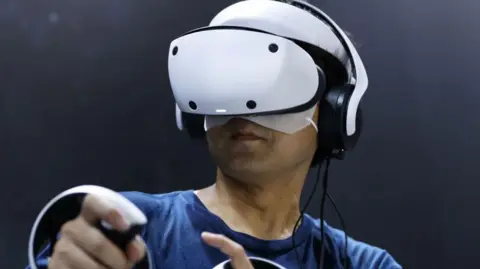 Getty Images
Getty ImagesGlasses or implants?
Whatever the experts say, the companies themselves seem bullish on their products and their respective strengths
It’s no secret that the long-term ambition of the tech giants here is to make mixed, or augmented, reality the norm. Facebook owner Meta named himself after his grand plan for us all to inhabit a virtual world called the Metaverse – working, resting and playing there and posing as digital avatar versions of ourselves. usual. Everything seems to have gone a bit quiet at the moment.
But they’re all right that one day, something will replace our phones, and maybe that thing is some form of VR headset. Eventually, I expect these things to start looking more like glasses and less like giant ski goggles… unless they’re brain implants (I’m not kidding).
“Devices that look like what they look like today — I think we know it’s not a mass-market device. It’s very heavy, it’s very difficult,” said Mr. Jijiashvili.
This is an area where rivals have focused their efforts, with Viture and XReal producing sunglasses with high-fidelity displays embedded in them.
Melissa Brown, head of Development Relations at Meta, told us that she “absolutely” thinks the Quest 3 could one day replace the smartphone. But the next day, Meta’s PR team got in touch with a more measured response from Mark Zuckerberg, in which he said “the latest generation of computing isn’t going away… it’s not like when we got phones, people stopped using computers”. .
Judging from what I saw at the Apple store on London’s Regent Street, the UK won’t be inundated with people wandering around in Vision Pros or Quest 3s.
The first customer I spoke to had actually just popped in for a charger and was slightly confused by the applause from Apple staff as he walked in.
But in the two hours we were there, several people came out smiling with big white Apple bags. The question remains: how many others can be persuaded to do the same.
#Vision #Pro #Apples #Headsets #Reach #Europe #Mainstream
Image Source : www.bbc.com


